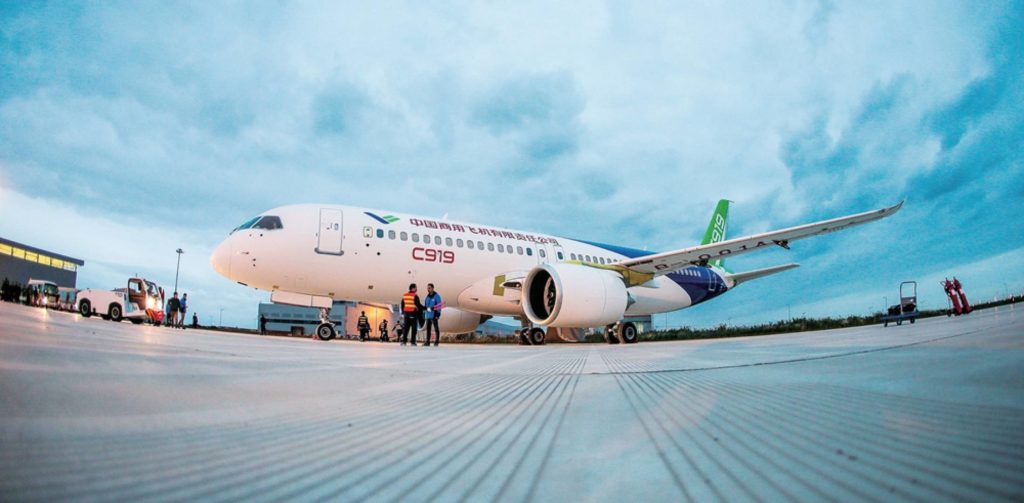




27 Oct 2025
Digital Fatigue in Aviation: When Too Many Tools Hurt Productivity
In aviation leasing, the promise of digital transformation has always been about speed, visibility, and smarter decision-making. Every process from maintenance tracking to contract management now runs on software. Lessors, airlines, and financiers rely on dashboards and data streams to stay connected and efficient.
But somewhere along the way, progress started creating its own problems.
Instead of one clean system, teams now juggle a dozen different tools each designed to solve a specific pain point. There’s a platform for asset tracking, another for maintenance records, one for compliance, one for finance, and a few more for communication.
What was meant to make work easier is now making it harder. Employees spend more time switching tabs, syncing files, and cross-checking data than actually analysing or making decisions. The result is digital fatigue, a quiet productivity drain that creeps in when too many tools compete for attention.
This fatigue doesn’t just slow people down. It fragments workflows, hides critical data inside silos, and raises operational risk. For an industry built on precision and timing, that’s a problem no lessor can afford to ignore.
As aviation’s digital ecosystem expands, the challenge has shifted. The real question isn’t how many tools a company can deploy, it's how well those tools work together.
What Exactly Is Digital Fatigue in Aviation Leasing?
Digital fatigue happens when the very tools designed to make work efficient start doing the opposite. It’s not about rejecting technology, it's about being buried under too much of it.
In aviation leasing, this looks like employees using five or six different systems just to complete one workflow. A technical team might log engine data in one application, check maintenance reserves in another, draft reports in Excel, and then upload everything into a compliance platform. Each task demands new logins, formats, and data entry steps.
Instead of saving time, teams lose it to constant switching.Instead of clarity, they get cluttered.
This overload creates what psychologists call cognitive switching costs the mental effort it takes to move between tasks and tools. Each switch interrupts focus and slows down progress. Over time, employees feel mentally drained even when they haven’t done more work.
In a high-stakes environment like aircraft leasing where accuracy and coordination between technical, legal, and financial teams are critical, this fatigue compounds. Miscommunication creeps in, duplicate data entries appear, and decisions take longer.
So, while digital transformation is meant to simplify complex operations, too many disconnected tools can have the opposite effect.
That’s the essence of digital fatigue: when digital systems stop helping humans and start overwhelming them instead.
How Does Digital Fatigue Create Silos and Reduce Efficiency?
Every lessor wants faster workflows and clearer visibility. But when those workflows depend on too many tools that don’t talk to each other, efficiency takes a nosedive.
Digital fatigue isn’t just about tired employees, it's about fractured systems. Each software platform runs its own version of the truth, trapping information in separate corners of the business. Over time, these silos grow deeper and harder to bridge.
Fragmented Workflows Across Teams
Think about a typical aircraft redelivery process.
- The technical team updates maintenance records in one system.
- The technical team reviews return conditions in another.
- The finance team tracks payments and reserves on their own dashboards.
None of these systems fully align, so every update requires an email thread, a shared spreadsheet, or a manual cross-check. What should be a smooth process turns into a sequence of disjointed steps, each one vulnerable to delay or error.
Information Silos and Partial Visibility
When data lives in different tools, no one sees the full picture. Maintenance data might show one thing while financial projections tell another. Without a unified view, lessors can’t assess an asset’s condition or value in real time. That leads to slower responses, duplicated work, and costly miscommunication.
Cognitive Overload and Lost Focus
Switching between systems also takes a mental toll. Studies suggest it takes more than 20 minutes to regain full focus after a single interruption. Multiply that across a full workday, and teams lose hours just reorienting themselves. This constant context-switching breeds frustration and burnout even among high performers.
Rising Hidden Costs
Behind every additional software licence lies a set of unseen costs: integration maintenance, data migration, duplicate storage, and compliance monitoring. Over time, this “SaaS sprawl” inflates total ownership costs while delivering diminishing returns.
When each platform operates in isolation, the organisation does too. Digital silos don’t just slow people down; they divide teams that should be working as one.
Why Should Lessors Rationalise Their Tech Stack?
At its core, tech stack rationalisation means taking a step back and asking Do all these tools still serve a purpose?
For many lessors, the honest answer is no. Over the past decade, digital transformation has led to layer upon layer of new platforms each solving a specific need but rarely integrating with the rest. Rationalising the tech stack isn’t about cutting costs or going “all-in-one” for the sake of it. It’s about clarity, focus, and control.
By streamlining their systems and consolidating data, lessors can restore efficiency, improve visibility, and make better decisions faster. Here’s how:
Centralised Data and Unified Insights
When all departments feed into one system of record, lessors finally get a single version of the truth. Integrated Lease Management or ERP systems unify data from maintenance, operations, and finance giving teams real-time insight into asset health, utilisation, and performance. That unified view reduces confusion and speeds up decisions that once took days.
Streamlined Processes and Automation
A rationalised platform eliminates repetitive manual work. Workflows like contract generation, compliance checks, and technical record collation can be automated reducing errors and improving consistency. Integrated tools such as flydocs or AerData have shown how automated document management can cut turnaround times and prevent late-return penalties.
Better Employee Experience
Simpler systems mean happier teams. When employees spend less time toggling between dashboards, they can focus on high-value work whether that’s analysing market data or improving client relationships. A clean, intuitive digital environment reduces training time and mental fatigue, boosting both morale and performance.
Optimised Cost Efficiency
Every tool that’s underused or redundant eats into margins. Tech audits often reveal that lessors are paying for software no one actively uses. Rationalising these saves licensing and maintenance costs while ensuring every tool contributes measurable value.
Improved Risk and Compliance Management
Integrated systems make it easier to track regulatory requirements, asset conditions, and contractual obligations in real time. When everything’s connected, lessors can spot potential compliance gaps or maintenance risks early protecting both the asset and the bottom line.
In short, rationalisation gives lessors what too many tools take away — visibility, simplicity, and control.
What Does a Rationalised Tech Stack Look Like?
A rationalised tech stack isn’t about stripping everything away it’s about connecting what matters. It’s the difference between a cluttered toolbox and one where every tool has a clear purpose and place.
For lessors, a rationalised digital environment brings structure, not restriction. It’s built around integration, visibility, and ease of use. Here’s what that looks like in practice:
1. A Unified Platform for Core Operations
Instead of managing multiple standalone tools, a rationalised setup centres on an integrated lease management or ERP system. This becomes the single operational hub linking maintenance tracking, asset management, compliance, and finance. Tools like flydocs, Ramco Aviation, or AerData show how one platform can automate data capture, manage lease obligations, and track asset value in real time.
2. Centralised Data with Clear Ownership
All teams feed into a shared database, ensuring there’s one source of truth for every aircraft, engine, and contract. Technical teams see what finance sees. Legal can review the same data as operations. This eliminates confusion, duplicate records, and errors caused by conflicting information.
3. Seamless Integration Instead of Isolation
A rationalised stack doesn’t mean everything has to be in one tool, it means the tools should work together. APIs and data bridges allow systems to communicate automatically, so updates in one module instantly reflect everywhere else. The goal is connectivity, not consolidation for its own sake.
4. Simple, Intuitive Interfaces
Good technology fades into the background. A rationalised stack prioritises usability, fewer logins, cleaner dashboards, and workflows designed around how teams actually work. This reduces cognitive load and helps employees focus on decisions, not navigation.
5. Built-in Analytics and Predictive Insights
When systems share data, analytics finally become meaningful. Lessors can use AI and predictive tools to identify trends, track performance across fleets, and even forecast potential risks or maintenance events all from one unified platform.
A rationalised tech stack, then, is not smaller it’s smarter. It replaces digital noise with digital clarity, allowing lessors to make faster, data-driven decisions without drowning in dashboards.
How Can Lessors Rationalise Their Technology Without Disruption?
Tech rationalisation sounds simple until you try doing it in a business where every minute of downtime matters. For lessors managing global portfolios, the process has to be deliberate, inclusive, and technically sound. The goal isn’t to rip and replace, but to evolve steadily, with minimal friction.
Here’s how lessors can make it work in practice:
1. Conduct a Comprehensive Audit
Start by listing every digital tool currently in use from lease management systems to file storage platforms. Identify what each one does, who uses it, how often, and at what cost. This inventory is your foundation. You can’t fix what you don’t fully see.
2. Assess Business Value and Technical Fit
For each system, ask two simple questions:
- Does this tool align with our long-term goals
- Is it still technically relevant?
Tools that duplicate functions, don’t integrate, or serve outdated workflows are prime candidates for replacement or retirement.
3. Engage Stakeholders Early
Digital fatigue isn’t just a tech problem, it's a people problem. Bring in department heads, IT, finance, and daily users during the evaluation process. This ensures that any decisions made reflect real operational needs, not just top-down assumptions.
4. Create a Consolidation Roadmap
Rationalisation doesn’t happen overnight. Build a step-by-step roadmap that outlines which tools will be merged, phased out, or upgraded. Start small test integrations or pilot new systems in one department before expanding. Gradual change prevents disruption and builds user confidence.
5. Prioritise Seamless Integration
When choosing new solutions, prioritise those with open APIs and proven integration capability. Tools that easily connect with existing platforms reduce the risk of new silos forming later. Integration should be a design principle, not an afterthought.
6. Invest in Change Management and Training
Even the best system will fail without buy-in. Communicate the “why” behind the change clearly less fatigue, better data, faster work. Offer hands-on training, phased rollouts, and ongoing support. When people see how new systems actually make their jobs easier, adoption follows naturally.
7. Balance Integration with Specialisation
Not every team needs the same tools. Legal, technical, and finance teams each have specialised needs. The art of rationalisation lies in keeping the systems that add unique value while ensuring they all talk to each other through shared data and interfaces.
Rationalisation isn’t a cost-cutting exercise, it's an investment in clarity. Done right, it builds a leaner, smarter ecosystem that works the way your teams do: connected, efficient, and focused.
What Are the Long-Term Benefits of Tackling Digital Fatigue?
When lessors streamline their technology, the gains extend far beyond faster workflows. Rationalising the tech stack is about building a foundation for better thinking, faster action, and stronger collaboration across every part of the business.
Here’s what that looks like in the long run:
1. Higher Productivity and Focused Teams
Fewer systems mean fewer distractions. When teams no longer have to jump between dashboards or reconcile multiple reports, their attention stays where it matters — analysing data, managing assets, and making strategic decisions. The mental energy once spent navigating systems gets redirected into productive work.
2. Faster, Clearer Decision-Making
With one unified view of data, lessors can move from reacting to anticipating. Whether it’s forecasting lease returns, evaluating asset performance, or assessing market risk, integrated systems enable decisions based on complete and consistent information.
3. Better Collaboration Across Departments
When everyone works from the same platform, communication naturally improves. Technical, legal, and finance teams share access to the same data and documents in real time. That eliminates misalignment and builds accountability one system, one story.
4. Reduced Risk and Stronger Compliance
Fragmented systems make it easy for errors and omissions to slip through. A rationalised environment strengthens oversight automating audit trails, tracking lease obligations, and alerting teams to compliance issues before they escalate.
5. Cost and Resource Optimisation
Consolidating tools reduces duplicate spending on software licences, integrations, and IT maintenance. It also saves countless work hours previously lost to manual data reconciliation and error correction. The result is leaner operations and stronger ROI from every tool that remains.
6. Improved Employee Well-Being and Retention
Digital fatigue doesn’t just hurt productivity, it affects morale. Simplified systems help employees feel more in control, less overwhelmed, and more satisfied with their work environment. In an industry competing for skilled talent, that’s a quiet but powerful advantage.
By addressing digital fatigue, lessors don’t just fix inefficiency they future-proof their organisations. The payoff is a workplace where technology amplifies focus, not fragments it.
Looking Ahead – The Future of Digital Efficiency in Leasing
The next chapter of digital transformation in aviation leasing won’t be defined by more tools it'll be defined by smarter ecosystems. The focus is shifting from quantity to quality: fewer platforms, deeper integration, and a renewed emphasis on user experience.
AI-Driven Intelligence, Not Just Automation
Future systems won’t just automate workflows they’ll learn from them. Artificial intelligence will analyse maintenance trends, forecast lease events, and flag anomalies before they become problems. This proactive layer of intelligence will transform how lessors manage risk and allocate resources.
Connected Platforms and Unified Dashboards
The ideal digital environment is one where every department technical, legal, financial, and commercial operates from the same, continuously updated source of truth. Unified dashboards will replace fragmented reporting, allowing real-time collaboration and decision-making across geographies.
Human-Centric Design Will Take Priority
Technology that overwhelms its users fails, no matter how advanced it is. The next wave of aviation software will prioritise clarity, simplicity, and usability, putting people not platforms at the centre of design. The best systems will feel almost invisible, supporting workflows without interrupting them.
Continuous Rationalisation Will Become Routine
Rationalisation isn’t a one-off project. As software evolves, new integrations, compliance rules, and market demands will require periodic review. The most forward-thinking lessors will treat digital maintenance the same way they treat aircraft maintenance ongoing, data-led, and essential for long-term performance.
In the end, digital efficiency isn’t about chasing the latest platform, it's about creating a digital environment that makes complex decisions feel simple again.
Conclusion – Less Technology, More Thinking
For lessors, the challenge ahead isn’t adopting more digital tools, it's learning when to stop. The industry’s rush toward digital transformation has created complexity where there should be clarity. Too many systems now mean too much noise, leaving teams overwhelmed and disconnected from the work that matters most.
Rationalising the tech stack is how lessors reclaim control. It’s how they turn digital fatigue into digital focus by integrating the right tools, automating the right workflows, and bringing every team under one cohesive system of record.
The future of aviation leasing belongs to those who understand that efficiency doesn’t come from more technology, but from better technology used well.
FAQs
1. What is digital fatigue in aviation leasing?
Digital fatigue happens when employees and teams are overloaded with too many software tools, each with its own workflows and data silos. Instead of boosting efficiency, this overload slows down productivity, increases stress, and leads to fragmented decision-making.
2. Why do too many digital tools create information silos?
When systems don’t integrate, each department ends up working in isolation. Technical, finance, and legal teams maintain their own datasets, which makes it harder to access unified, up-to-date information about an asset or lease.
3. How can lessors identify redundant or underused tools?
A simple tech audit can uncover unused or overlapping systems. Tracking how often each tool is used, who uses it, and whether it contributes to business outcomes helps pinpoint what to retire, consolidate, or replace.
4. What are the signs that a leasing company needs to rationalise its tech stack?
Common signs include employees using multiple systems for the same task, frequent data mismatches between departments, long onboarding times, and rising software costs without a matching productivity gain.
5. How does integration improve productivity and reduce costs?
Integrated platforms eliminate duplicate data entry, speed up workflows, and provide real-time visibility across departments. This reduces time spent reconciling reports and cuts hidden costs like manual errors, IT maintenance, and employee fatigue.





